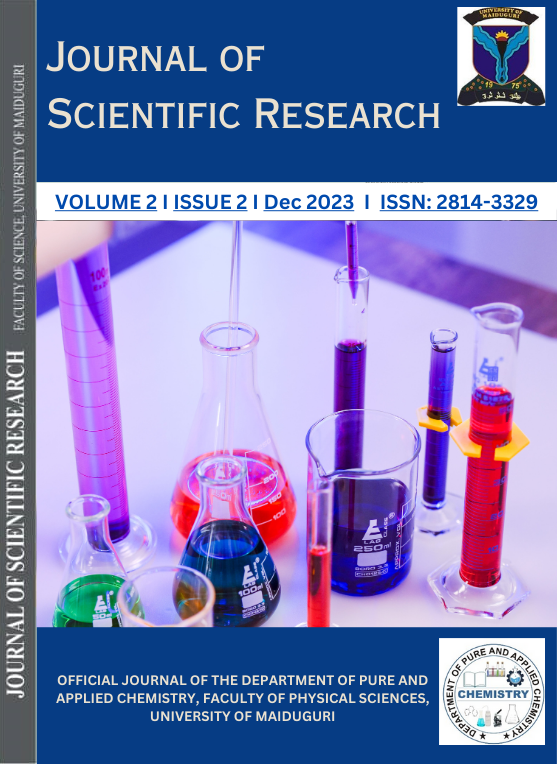MOLECULAR DOCKING STUDIES AND IN-SILICO ADME EVALUATION OF SOME HYBRID 2-QUINOLINONE DERIVATIVES CONTAINING CINNAMIC ACID AS ANTI-BREAST CANCER DRUGS
Keywords:
ADMET; Docking; 3ERT; 2-quinolinone; MCF-7Abstract
Cancer has been classified as the second leading cause of death worldwide after cardiac arrest, and this has resulted in a series of studies by various scholars, both in experimental and theoretical science. While those in experimental science focus on synthesis and evaluation, the theoretical or computational scientist screens the synthesised and even unreported compounds against the targeted receptor. This study aimed at investigating the potential and mechanism of interaction, drug-likeness, and pharmacokinetics of five 2-quinolinone derivatives containing cinnamic acid as anti-breast cancer drugs through molecular docking and in-silico pharmacokinetic prediction. Molecular docking was carried out between the experimentally validated five 2-quinolinone derivatives (3-(7-hydroxy-4-methyl-2-oxo-2H-quinolin-1-ylamino)-3-phenyl acrylic acid (1), 3-(7-hydroxy-4-methyl-3,6,8-tribromo-2-oxo-2H-quinolin-1-ylamino)-3-phenyl acrylic acid (2), 3-(7-Acetoxy-4-methyl-3,6,8-tribromo-2-oxo-1H-quinolin-1-ylamino)-3-phenyl acrylic acid (3), 3-(7-(β-hydrazino, β-p-chlorophenyl-vinyloxy-4- methyl-2-oxo-1H-quinolin-1 -ylamino] -3-phenylacrylic acid hydrazide (4) and 2,2-(Diacetyl)-1-[β-(4-methyl-2-oxo-2H-quinolin-7-yloxy-β-(4-chlorophenyl)vinyl]-hydrazine (5)) against breast cancer cell line (MCF-7). The 2-quinolinone derivatives were optimised geometrically (DFT, B3LYP), after which they were docked with the targeted protease (protein data bank ID: 3ERT), and their pharmacokinetic properties were predicted as well. The co-crystallised ligand-protein of the protease was used as a standard to provide the basis for validation of the docking score, and for the interaction of amino acid residues involved in the interaction. The result of the molecular docking obtained using this method showed a docking score of (-24.9422, -28.713, -24.0162, -28.9148, and -29.3984 kcal/mol). The interactions with some significant amino acid residues demonstrated the success of the molecular docking interaction. Compounds 1 and 5 firmly adhere to all of Lipinski's rule's requirements, according to the pharmacokinetic predictions, and they also have outstanding GIA and bioavailability. Furthermore, 2-quinolinone derivative hybrids have the potential to be the lead compound for an efficacious ERα antagonist that might be used to treat breast cancer, in addition to providing insight into how the compound binds to the MCF-7 receptor.
Keywords: ADMET; Docking; 3ERT; 2-quinolinone; MCF-7
https://doi.org/10.5281/zenodo.10575909

